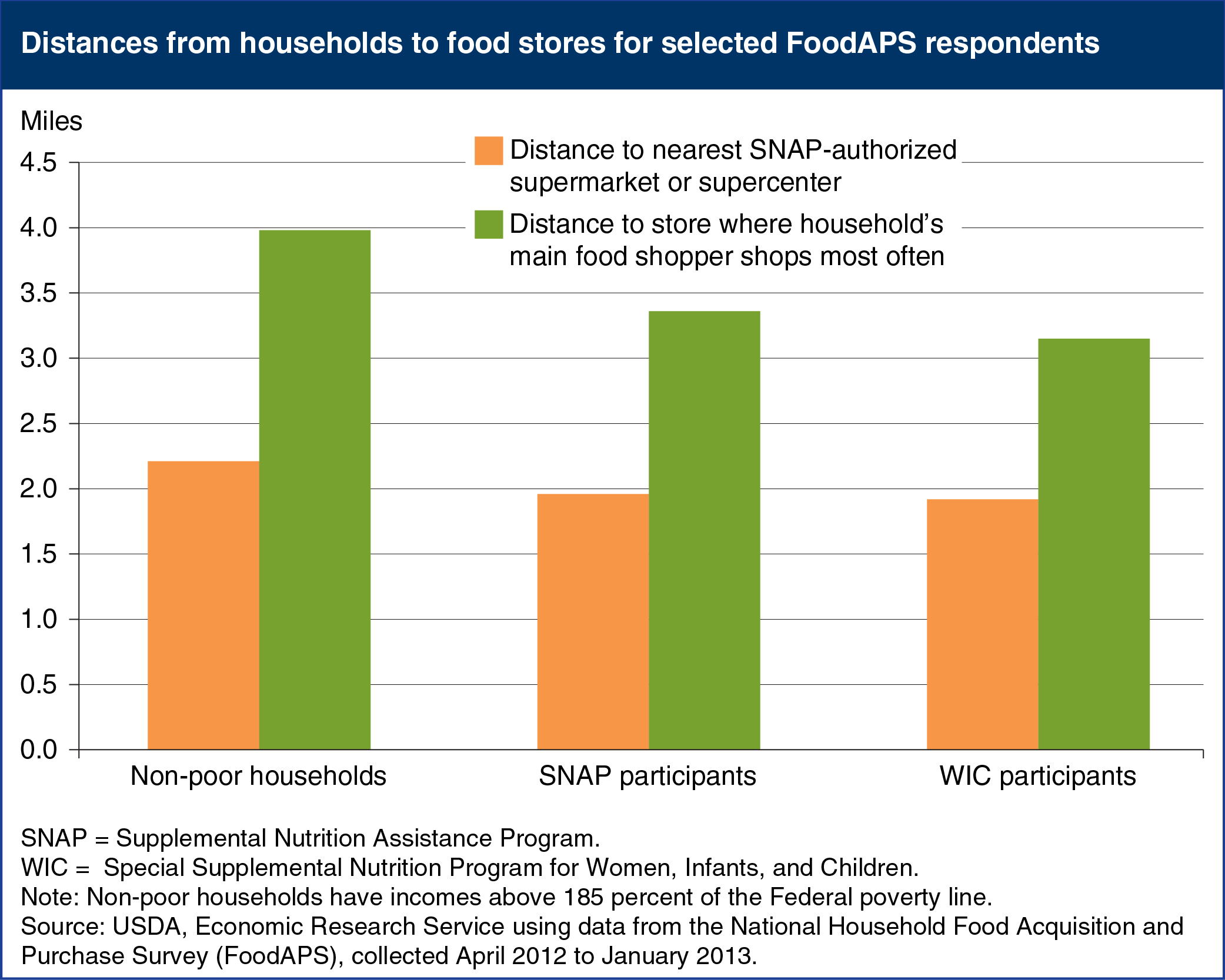U.S. food shoppers do not usually shop at the closest grocery store
- by Jessica E. Todd
- 3/31/2015

A new survey funded by USDA, the National Household Food Acquisition and Purchase Survey (or FoodAPS), asked the main food shopper of the household where they did most of their food shopping. Researchers compared the distance to this store to the distance to the nearest supermarket or supercenter authorized to accept benefits from USDA’s Supplemental Nutrition Assistance Program (SNAP-SM/SC). Researchers found that on average, all households—those receiving food assistance and those not—bypass the SNAP-SM/SC closest to their home to shop at another store, which may or may not be SNAP authorized, for their main grocery purchases. The average SNAP participant lived 1.96 miles from the nearest SNAP-SM/SC, but traveled 3.36 miles to their primary store for food shopping. WIC-participating households were 1.92 miles from the nearest SNAP-SM/SC, but traveled 3.15 miles to do their main grocery shopping. Non-poor households traveled 3.98 miles, while the closest SNAP-SM/SC was 2.21 miles from their home. Store proximity may be important, but price, quality, and selection also affect where households shop. In addition, households may food shop on their way home from work or other activities. The statistics for this chart are from the ERS report, Where Do Americans Usually Shop for Food and How Do They Travel to Get There?, released on March 23, 2015.

